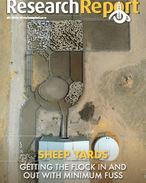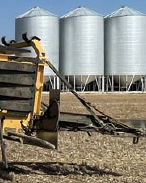This article is 7 years old. Images might not display.
The trial is part of a project that aims to lift the productivity of Tasmanian cereal cropping to reduce the state’s reliance on grain supplied from the mainland has set new yield benchmarks for feed wheat.
Raising the bar in feed wheat from about 12 tonnes per hectare to more than 15t/ha were eight trials testing new germplasm and agronomic management practices in wheat and barley across 800 experimental plots at Hagley, north-west Tasmania, in 2016.
The trials were part of the Grains Research and Development Corporation-funded Hyper Yielding Cereals Project.
Of these trial plots, thought to be Australia’s highest-ever-yielding, one wheat variety yielded almost 17t/ha. Putting this into perspective, New Zealand grower Eric Watson was certified by Guinness World Records for growing the world’s highest-yielding wheat crop at 16.79t/ha in April 2017. Tasmanian growers average 4.4t/ha for red grain feed wheat.
Leading the project in collaboration with Southern Farming Systems, FAR Australia managing director Nick Poole says the preliminary findings highlight the untapped potential when new germplasm drawn from Australia and northern Europe, mainly France and Germany, is combined with management techniques – particularly sowing time.
FAR Australia managing director Nick Poole discussed the Hyper Yielding Cereals Project at a GRDC Grains Research Update in Campbell Town, Tasmania recently.
“We’re incredibly excited by the yield potential we’ve seen from combining new germplasm and management regimes in the first-year trial results,” Poole said.
“We accept the results were generated in an exceptional year (2016) but, irrespective of that, I think it sets new benchmarks for the productivity that is possible in Tasmania.
“It’s important that we find germplasm material well-suited to the Tasmanian environment that has a growing season longer than anywhere else in Australia.
“Australian breeding companies understandably tend to be focused on mainland wheats, so we need to look more widely for germplasm suited to the state’s unique growing conditions.”
Underpinning this need is domestic production of cereal grain in Tasmania, estimated at 60,000 to 80,000t, which sees the state import 150,000 to 200,000t of cereal grain a year.
Poole said screening the germplasm contained in 50 wheat lines showed late-sown plants (seeded on 27 April) averaged yields 3t/ha higher than their early-sown counterparts (seeded on 6 April).






















